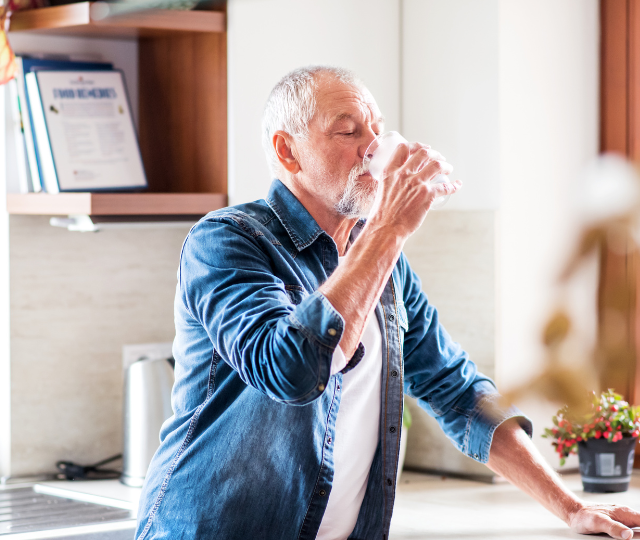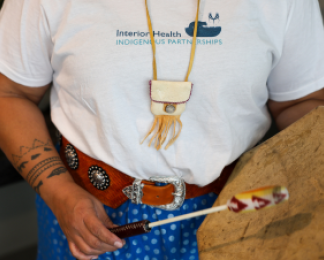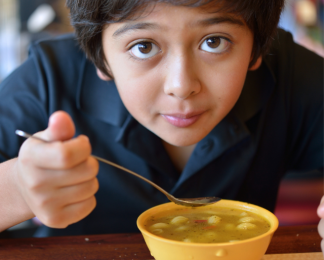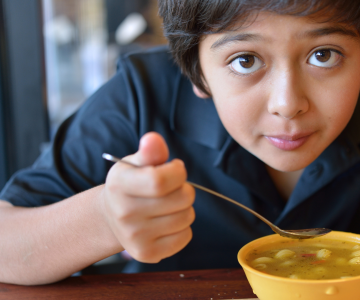Breadcrumb
Extreme Heat
Be safe when the weather gets warm. Stay on top of extreme heat advisories, understand how heat alert and response systems operate in B.C. and learn about the impacts of heat on health.

Key Information about heat and health
To access weather information and alerts for the Interior region, please visit the
Environment Canada website or download the WeatherCAN app or Alertable.
- BCCDC Preparing for Heat Events
- Heat Safety Poster
- Be prepared for hot weather | First Nations Health Authority
- Wellness checks during heat events
- Extreme Heat Preparedness Guide
- BC Provincial Heat Alert and Response System
- Heat Alert and Response Planning Toolkit for Interior BC Communities
- For those who quality, free portable air conditioners are available through Fortis BC and BC Hydro.
Extreme heat overview
Extreme heat events (also known as heat waves) involve high temperatures and may be combined with high humidity. During extreme heat events, individuals are at higher risk of experiencing heat-related illness. As we experienced in 2021, heat can have devastating impacts. The BC Coroners Service directly attributed 619 deaths to the 2021 extreme heat events.
Episodes like this are projected to become hotter, longer, and more frequent as BC’s climate changes. Interventions that are practical and feasible at the personal, community, governmental, and societal levels can increase community resiliency and save lives.
Heat and health
Exposure to hotter than average conditions can lead to increases in body temperature, which may cause a number of heat-related illnesses.
The impact of an extreme heat event varies from person to person based on genetics, age, and one’s ability to adapt. Heat can affect everyone's health but some people are more exposed to, and/or more physiologically/socio-economically susceptible to severe heat-related illness and death.
Those at higher risk include:
Age:
- Seniors ages 65 years or older
- Infants and young children
Working Conditions:
- People who work outdoors
- People wearing personal protective equipment (PPE) in places not temperature controlled
- People who perform manual labour
Health Status:
- People with chronic poor health, heart problems, or breathing difficulties or diabetes
- People on certain medications
- People who are pregnant
- People with mental illness such as schizophrenia, depression, or anxiety
- People with substance use disorders
- People with limited mobility
Living Conditions:
- People who live alone or are socially isolated, homeless, or unsheltered
- People with low income
- People living in homes with poor temperature control
- People living in areas without access to green space
Mental Health and Substance Use:
HealthLink BC
- Beat the Heat
- Heat-Related Illness
- Medications and Heat
- Quick Tips: Staying Active in Hot Weather
- Sun Safety for Children
Health Canada
Government of BC
Periods of heat are often associated with wildfire smoke events in our communities. For more information on air quality, please refer to our Air Quality page.
Preparing and responding to extreme heat
There are a number of steps you can take to prepare for extreme heat. For example:
Your Home
- Identify a cooler space in your home to sleep at night.
- Find an air-conditioned place to cool off on very hot days (e.g., stay with family and friends, visit a museum, movie theatre, library, or shopping mall).
- Check that you have a working fan/air conditioner (if you have one).
- Practise opening doors and windows to move cool air in at night and shutting your windows to keep the sun out during the day.
- Get a digital room thermometer to check the temperature of your home so you know when it is getting too hot.
Your Friends and Family
- Think of people who might be more susceptible to heat and develop a buddy system – check in with your hot weather buddy often, especially in the evenings when indoor temperatures are highest, and in the morning to see how they managed throughout the night.
- If your home is cooler, invite those who are at highest risk to stay with you.
Your Health
- Talk to your doctor or pharmacist if you take regular meditations to understand if it increases your health risk in the heat.
- Understand the signs and symptoms of heat-related illness so you can identify them right away. Take immediate action to cool down and call for help if needed.
You can print this two-sided post card, Be prepared for heat this summer (PDF), and post it in your home to help remind you of these steps.
Keep your home cool by:
- Opening windows when the outdoor temperature goes down below the indoor temperature at night
- Shut windows and close curtains/blinds to keep cooler air in and the sun out
- Avoid making meals using the oven
- Important: If you are experiencing extreme heat during an air quality advisory, prioritize cooling down. Heat is typically more dangerous than short-term exposure to poor air quality.
Keep your body cool by:
- Wearing a damp towel or shirt
- Taking a cool bath or shower
- Putting an ice tray in front of a fan
- Using a personal mister or spray bottle
- Drinking lots of water
- Lowering your activity level and avoiding intense activities
- Important: While fans can help you feel more comfortable, they do not work to lower body temperature for older people at temperatures over 35C.
Do your best to take care of high-risk individuals by:
- Visiting them to check their indoor temperature
- Encouraging them to take cool baths and sleep in their coolest room
- Invite them to your house if you have air conditioning
- Never leave children, dependent adults or pets alone in a parked car. Leaving windows open will not help.
Severe heat illness and heat stroke are medical emergencies. Call 9-1-1 if you are caring for someone with signs or symptoms of severe heat-related illness. Symptoms of severe heat-related illness include:
- Nausea and/or vomiting
- Faint or loss of consciousness
- Confusion or disorientation
- Difficulty speaking
- Movement and coordination problems
- Lethargy
- Not sweating
- Hot, flushed or very pale skin
- Not urinating or very little urinating
- Rapid breathing and faint, rapid heart rate
- Body temperature >39°C (102°F)
While waiting for help to arrive, you can help cool the person by:
- Moving them to a cool place, if possible
- Remove excess clothing
- Apply cold water, wet towels or ice packs around the body, especially the neck, armpits, and groin
Symptoms of mild to moderate heat-related illness include:
- Headache
- Nausea
- Weakness
- Irritability
- Light-headed or dizziness
- Disorientation
- Thirst or dry mouth
- Difficulty swallowing
- Fatigue, malaise
- Heat rash, heat edema or heat cramps
- Decreased urine output
- Increased heart rate
- Skins feels very warm and sweaty
- Body temperature >38°C (100°F)
Mild to moderate heat-related illness can quickly become severe. Contact a health-care provider or HealthLinkBC at 8-1-1 if you are unsure. If symptoms worsen, call 9-1-1.
Heat preparation & planning resources
BC Centre for Disease Control
- Heat Event Response Planning
- BC Provincial Heat Alert and Response System
- Preparing for Heat Events
- Prepare for Extreme Heat Events - Housing and Shelter Services
- Prepare for Extreme Heat Events - Health and Social Service Providers
- Indigenous Health Resources
PreparedBC
WorkSafe BC
Interior Health
- Climate Resiliency & Planning webpage
- Heat Safety Poster
- Heat and Substance Use Fact Sheet
- Heat and Mental Health Fact Sheet
- Heat Response Planning for Southern Interior B.C. Communities Toolkit 2023
National Collaborating Centre for Environmental Health
BC Provincial Heat Alert Response System (HARS)
To provide consistency and guidance for community response to heat, heat alert response systems are designed to:
- Warn the public about heat risk through an organized and defined communication system
- Help individuals and communities prepare and protect themselves, before and after an extreme heat event
- Alert decision-makers to take preventative actions to protect public health
- Increase community resilience to extreme heat and develop effective actions to reduce heat-health risks, especially to those who are most susceptible.
This year, a BC HARS has been developed by the BC HEAT Committee, which is led by members of the BC Centre for Disease Control (BCCDC), the BC Ministry of Health, and Health Emergency Management BC (HEMBC). This 2-tiered response system leverages existing heat criteria used by Environment and Climate Change Canada (ECCC) as well as regional communication structures from Emergency Management BC (EMBC) to support coordination calls with partners.
|
Alert Level |
Heat Warning |
Extreme Heat Emergency |
|
Public Health Risk |
Moderate (5% increase in mortality) |
Very high (20% or more increase in mortality) |
|
Descriptor |
Very hot |
Dangerously hot |
|
Criteria within Interior Health Region (listed as daytime temperature- nighttime temperature –daytime temperature) |
Southeast Interior: 35 °C -18 °C -35 °C
Northeast Interior*: 29 °C - 14 °C - 29 °C
*includes North Thompson, 100 Mile House and part of Cariboo Chilcotin |
Heat warning criteria have been met and forecast indicates that daily highs will substantively increase day-over-day for 3 or more consecutive days
|
|
Historic Frequency |
1-3 per summer |
1-2 per decade |
When temperatures reach the specified regional criteria triggers for a heat warning or an extreme heat event, the ECCC will issue a special weather statement. Heat warnings will be issued on the ECCC weather alerts webpage and on the WeatherCAN app. Extreme heat emergencies will be alerted through a Broadcast Intrusive Alert via EMBC Alert Ready.
The issuing of a Heat Warning or Extreme Heat Emergency should activate a series of actions by different ministries, levels of government, public health organizations, and professionals, as well as the general public. Tables containing key messages and recommended actions are provided in the BC HARS for consideration when preparing for and responding to the different heat alerts. They are meant as a tool to initiate heat planning, or to complement and support more robust heat plans, ultimately building more resilient communities for the years ahead.
Examples include:
- Leading into a heat wave or extreme heat event: This may include education about the risks of extreme heat, precautions to take, signs of heat illness to watch for, and recommended times to stay indoors/outdoors.
- At the peak of a heat wave or extreme heat event: This may include recommendations for outdoor workers, Sunscreen SPF and hydration recommendations, ideas about where to seek air conditioning/shade, suggestions to check in on family members or vulnerable individuals, and what to do if you suspect you or someone you know has heat stroke.
- Leading out of a heat wave or extreme heat event: This may include recommendations on easing back into physical activity, continuing to monitor for heat illness or dehydration, and continuing to use caution as indoor temperatures may remain high (despite a drop in outdoor temperatures).


As a doula, Sage Thomas attended a home birth where the family integrated Indigenous ceremonial practices. She’s now practising midwifery in her home community.
/stories/tkemlups-te-secwepemc-grad-offers-midwifery-care-close-home


Thirty-five years into her career with IH, Elizabeth Adolph still loves what she does: taking care of residents at Mountain View Lodge in Lillooet.
/stories/we-are-ih-care-aide-proud-residents-consider-her-friend


In the 5 years since the In Plain Sight report was released, we’ve made strides towards being a culturally safe organization—but there’s more work to do.
/stories/ihs-fifth-plain-sight-response-supports-reconciliation


Inspired by her aunt’s career as a pharmacist, Angela became a pharmacy technician to use the hands-on aspect of compounding to benefit patient care.
/stories/we-are-ih-pharmacy-tech-enjoys-problem-solving-patients


Souper Meals brings students together once a week over locally made soup, fresh fruit, veggies and buns, all free of charge.
/stories/more-soup-benefits-universal-school-lunch-program


With decades of experience rooted in compassion and commitment to children’s health, Dr. Jeff Wong is carving a path for pediatric care at Kelowna Hospital.
/stories/dr-jeff-wong-leads-kelowna-pediatric-department-forward
STAY CONNECTED
Receive news, alerts, public service announcements and articles right to your inbox.

